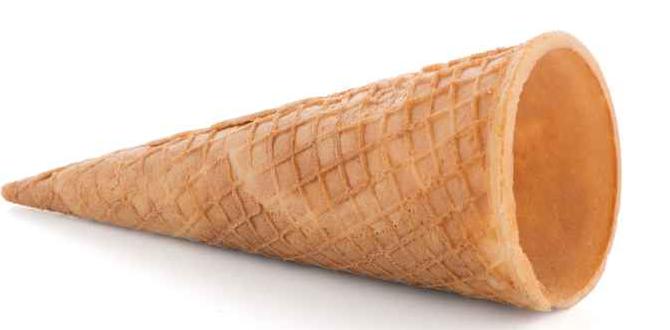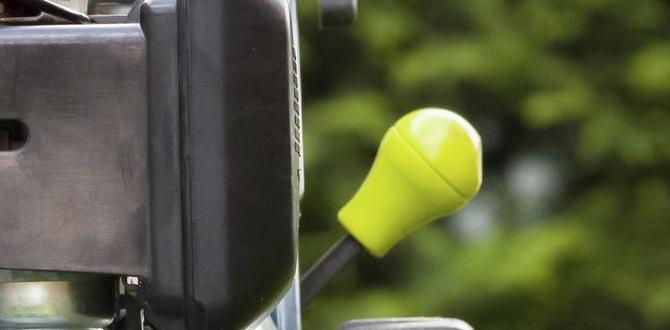Using a nailer in cold weather requires a few simple adjustments to ensure it performs reliably. By preparing your tools, choosing the right fuel, and storing them properly, you can tackle projects year-round, even when the temperature drops unexpectedly.
Don’t let a little frost stop your DIY spirit! Working with a nailer when it’s chilly can feel like a real challenge. You might notice your nailer firing weaker nails, or perhaps it’s just not cooperating as it usually does. This is a common issue when temperatures dip, but it doesn’t mean you have to put your projects on hold. With the right knowledge and a few smart tips, you can ensure your nailer works efficiently and safely, no matter how cold it gets. Let’s dive into how you can keep your nailing projects on track this season.
Table of Contents
Why Cold Weather Affects Nailers
Cold weather can be a tough adversary for any tool, and nailers – especially pneumatic and cordless models – are no exception. The primary culprit is the impact of low temperatures on the internal components and the energy sources. Understanding these effects is the first step to overcoming them.
When air cools down, it becomes denser. For pneumatic nailers, this means the air pressure might not be as consistent, leading to less power behind each nail. For cordless models, the batteries are the real MVPs, and cold seriously impacts their electrochemical reactions. This can drastically reduce their ability to hold a charge and deliver consistent power. Lubricants and oils can also thicken in the cold, potentially causing moving parts to move slower or even seize up.
Think of it like trying to run a marathon in a snowstorm versus a sunny day. Your body – or in this case, your nailer – has to work harder against the environment. The materials you’re working with can also become more brittle in the cold, making them more prone to splintering. So, it’s not just about the nailer; the wood itself can behave differently.
Preparing Your Nailer for Cold Weather
Before you even pick up your nailer on a frosty morning, a little preparation goes a long way. This proactive approach can save you a lot of frustration and prevent potential damage to your tool.
1. Choose the Right Nailer Type
Some nailers are naturally better suited for cold-weather use than others. Understanding the pros and cons of each type in the cold can help you make the best choice for your project.
Pneumatic Nailers: These rely on compressed air. While they generally offer consistent power, the air source itself needs attention. If you’re using a compressor outdoors, its performance can be affected. Hoses can become stiff and less flexible, increasing the risk of leaks.
Cordless (Battery-Powered) Nailers: These are often a convenient choice for outdoor work. However, their batteries are particularly sensitive to cold. Cold temperatures significantly reduce battery performance, meaning fewer nails per charge and slower charging times. Some models may even refuse to charge or discharge in extreme cold.
Gas/Fuel Cell Nailers: These use a fuel cell and a battery to power a small internal combustion engine. They can be quite effective in cooler temperatures, as the fuel itself is less affected by the cold than battery power. However, extreme cold can still impact the fuel delivery and the battery’s ignition system.
2. Fueling Up: Air and Batteries
The energy source is crucial, and how you manage it in the cold is key to successful operation.
Pneumatic Nailer Air Considerations
For pneumatic nailers, the air supply is everything. Here’s how to keep it frosty-free:
- Use a Good Quality Air Hose: Opt for hoses made with materials that remain flexible in cold temperatures. Cold-weather rated hoses are designed to prevent cracking and stiffness. Look for hoses with a low-temperature rating.
- Drain Your Tank Regularly: Water in your compressed air tank can freeze, leading to blockages and damage. Drain your air compressor tank before and after each use, especially in cold, humid conditions. You can find more tips on air compressor maintenance on resources like Compressor World.
- Consider an Air Dryer: If you’re doing extensive work in damp, cold conditions, an air dryer can remove moisture from the compressed air before it reaches your nailer.
- Warm Up Your Air (Carefully): While not always practical, slightly warming the air before it enters the nailer can help. This is more about preventing condensation inside the nailer itself.
Cordless Nailer Battery Care
Batteries are the heart of your cordless nailer. Treat them with care in the cold:
- Keep Batteries Warm: The golden rule is to store batteries indoors at room temperature. Bring them out to the job site only when you are ready to use them.
- Warm Batteries Before Use: If batteries have been stored in a cold car or garage, let them warm up to room temperature indoors before charging or using them. A cold battery won’t accept a charge efficiently and will perform poorly.
- Charge Indoors: Always charge your batteries indoors in a warm environment. Refer to your tool manufacturer’s guidelines for optimal charging temperatures. Different battery chemistries have different sensitivities; for instance, Lithium-ion batteries used in most modern tools are particularly susceptible to cold.
- Carry Spares: Have at least one spare battery fully charged and kept warm indoors. As batteries cool, their capacity diminishes, so a second, warm battery can be a lifesaver.
- Check Battery Health: Older batteries tend to perform worse in the cold. If you’re experiencing significant issues, it might be time to consider a new battery.
3. Lubrication Matters
Proper lubrication ensures smooth operation and prevents parts from seizing up. In cold weather, standard lubricants can become thick and sluggish.
For Pneumatic Nailers:
- Use Cold-Weather Lubricants: Your nailer manual likely specifies a particular oil. If you’re working in sub-freezing temperatures, consider a lubricant specifically formulated for cold conditions. These lubricants remain more fluid at lower temperatures.
- Less is More: Over-lubricating can lead to oil pooling and potential freezing or inconsistent performance. Use only the recommended amount, typically a few drops in the air inlet each day.
- Consider Dry Lube: Some manufacturers offer dry lubricants that utilize silicone or Teflon and are less susceptible to freezing than oil-based lubricants.
For Cordless/Gas Nailers:
These often have fewer user-serviceable lubrication points than pneumatic models. However, check your manual for any specific instructions or recommended maintenance, particularly around moving parts that might be exposed to the elements.
4. Tool Storage
How you store your nailer when not in use is critical for its longevity and performance in cold weather.
- Store Indoors: The simplest and most effective tip is to store your nailer indoors in a dry, temperature-controlled environment. Keeping it warm overnight means it’s ready to go when you are.
- Avoid Extreme Temperature Swings: Bringing a freezing cold nailer into a warm, humid workshop can cause condensation to form inside. This moisture can freeze later or lead to rust. If possible, allow tools to gradually adjust to ambient temperature.
- Clean and Dry Before Storing: Always clean sawdust and debris from your nailer, and ensure it’s completely dry before storing it. This prevents any moisture from freezing and causing issues.
Using Your Nailer in Cold Climate: Step-by-Step Guide
Now that your nailer is prepped, let’s walk through the process of using it effectively in chilly conditions.
Step 1: Acclimatize Your Tool
If your nailer has been stored in a cold environment (like a car or unheated garage), bring it into a warmer space for at least 30-60 minutes before you plan to use it. This allows internal components and any lubricants to reach a more optimal operating temperature, preventing stiffness and potential condensation issues. If you have a cordless nailer, you can bring the batteries in to warm up separately as well.
Step 2: Connect and Test (Pneumatic Nailers)
For pneumatic nailers:
- Connect your cold-weather-rated air hose to the compressor and then to your nailer. Ensure connections are secure.
- Turn on your air compressor and set the desired pressure. Refer to your nailer’s manual for recommended PSI for the fasteners you are using. It might be necessary to run at a slightly higher PSI than usual to compensate for potential air density changes, but do not exceed the nailer’s maximum recommended pressure. Consult your nailer’s manual, as manufacturers like DeWalt offer fantastic resources on tool operation and maintenance.
- Perform a test fire into a scrap piece of wood. Listen for the characteristic “thump” and check that the nail is driven to the correct depth. If not, adjust the pressure accordingly or check for any air leaks.
Step 3: Load and Test (Cordless/Gas Nailers)
For cordless or gas/fuel cell nailers:
- Ensure your battery is properly seated and locked into place. If it feels sluggish to insert, let it warm up more.
- Load your nails according to the manufacturer’s instructions. Ensure they are properly aligned in the magazine.
- Perform a test fire into a scrap piece of wood. Check that the nail drives completely. If not, try a fully charged and warm spare battery. For gas nailers, ensure the fuel cell is correctly installed and the igniter is functioning.
- If you’re experiencing weak drives with a cordless nailer, it’s a strong indicator that the battery is too cold or its charge is depleted. Swap to a fresh, warm battery.
Step 4: Adjust Depth and Power Settings
Cold wood can be harder to drive nails into. You might need to make slight adjustments to your nailer’s depth gauge or power settings.
- Depth Adjustment: If nails are not fully sinking, slightly increase the depth setting on your nailer. Start with small increments.
- Power Settings (if applicable): Some cordless nailers allow for power adjustments. Look for a “power boost” or similar feature if available, or check your manual for how to optimize power output in less-than-ideal conditions.
Step 5: Maintain Consistent Operation
Keep your nailer working efficiently by firing nails regularly.
- Frequent Firing: Regularly firing nails helps keep the internal mechanisms moving and can prevent lubricants from thickening too much. Don’t leave the tool idle for extended periods in the cold.
- Check for Ice Buildup: In very humid, cold conditions, ice can sometimes form around the exhaust port of pneumatic nailers due to rapid air expansion and moisture. If you see this, briefly switch off the air supply and let it thaw.
Step 6: Take Breaks and Re-Acclimatize
Working in the cold is demanding on both you and your tools. Don’t overdo it.
- Human Warmth: Take regular breaks to warm up your hands and body. Cold hands lead to less dexterity and can affect your tool control.
- Tool Warmth: If your tool starts to feel sluggish or performs noticeably worse, consider bringing it indoors for a short break to let it warm up again, especially if it’s a cordless model with a cooling battery.
Step 7: Post-Project Maintenance
Just as preparation is key, proper cleanup after your project is vital for cold-weather success.
- Close the air valve on your compressor and disconnect the hose from the nailer.
- If using a pneumatic nailer, drain any remaining air from the tank.
- Clean any dust or debris from the nailer’s exterior and magazine.
- Ensure the nailer is completely dry before storing it in a warm, dry place.
- For cordless tools, ensure batteries are removed and stored indoors separately.
Tips for Specific Nailer Types in the Cold
Let’s drill down into some specific advice for each common nailer type:
Pneumatic Nailer Cold Weather Tips
While robust, pneumatic systems can still suffer in the cold:
- Air Compressor Placement: If possible, keep your air compressor somewhat sheltered from the direct wind and snow. Even a tarp can help.
- Hose Management: Stiff hoses can kink or crack. Try to keep them as unkinked as possible and be mindful of where you’re stepping on them. Consider shorter hoses to reduce the air volume that can cool down between the compressor and the nailer.
- Moisture Traps: Ensure your inline moisture trap is functioning correctly and draining regularly. Sometimes, condensation in the trap itself can freeze.
- Consistent Airflow: Keep the compressor running long enough to maintain consistent pressure. Rapid cycling can exacerbate temperature fluctuations.
Cordless Nailer Cold Weather Tips
These are often the most convenient but also the most sensitive:
- Battery Protection: Consider an insulated battery case if you must carry spares in less-than-ideal conditions for short periods.
- Monitor Charge Level: Don’t wait for a battery to die. Swap it out proactively when you notice a performance dip, even if the indicator still shows some charge.
- Check for Freezing: If a battery feels unusually cold to the touch and won’t engage, it may have frozen. Do NOT attempt to charge it until it has thoroughly warmed up indoors.
- Tool Performance Indicators: Many cordless tools have indicator lights that can signal battery status or potential issues. Familiarize yourself with what these lights mean for your specific model. Check manufacturer websites like Milwaukee Tool Support for model-specific information.
Gas/Fuel Cell Nailer Cold Weather Tips
These can be surprisingly good in the cold due to their internal combustion but still have limitations:
- Fuel Cell Compatibility: Ensure your fuel cells are rated for the temperatures you’re working in. Some fuels can become less volatile in extreme cold, affecting ignition and power.
- Battery Performance: The small ignition battery in these tools is also susceptible to cold. Keep it warm, just like any other power tool battery.
- Clear Exhaust: The exhaust port can sometimes get frosted over if not operating continuously. Ensure it remains clear for proper operation.
- Run Time: Expect slightly reduced run times compared to warmer weather, especially with the ignition battery.
Troubleshooting Common Cold Weather Nailer Issues
Even with the best preparation, you might run into a snag. Here’s how to troubleshoot:
Issue: Weak Nail Drives
- Pneumatic: Check air pressure, ensure no leaks in the hose, or consider a slightly higher PSI (within limits). Check the air filter for ice/blockages.
- Cordless: Battery is too cold or depleted. Swap for a warm, fully charged spare.
- Gas: Fuel cell issue, ignition battery low, or engine needs a moment to warm up.
Issue: Nails Not Countersinking Properly
- All Types: Adjust the depth setting on your nailer to a slightly deeper setting. The material might be harder/colder.
- Pneumatic: Ensure you’re above the minimum required PSI.
Issue: Nailer Firing Inconsistently or Jamming
- Pneumatic: Check for moisture in the air line that might be freezing. Ensure proper lubrication.
- Cordless/Gas: Battery issues are common, or internal mechanisms might be stiff due to cold. Allow the tool to warm up.
- All Types: Ensure nails are loaded correctly and are the right type/size for the tool and material.
Issue: Tool Feels Sluggish or Slow
- All Types: This is a classic sign of cold affecting lubricants or batteries. Bring the tool indoors for a break.
Safety First in Cold Weather DIY
Working in the cold adds extra layers of concern, making safety paramount.
Always wear appropriate cold-weather gear: insulated gloves that still allow dexterity for tool operation, warm layers, a hat, and waterproof boots. Be aware of the reduced traction on icy surfaces. Ensure your work area is clear and stable. Condensation can make surfaces slick, and your tool’s weight feels heavier when your hands are numb. Never compromise on safety for the sake of speed. For more on general tool safety, resources like the OSHA standards for hand and power tools provide excellent guidance, though always adapt these to your specific working environment and conditions.
Keep your work area well-lit and free of tripping hazards. If working outdoors, be mindful of wind chill factors and take breaks in a warm space. Hydration is still important even in the cold, but avoid excessive caffeine or alcohol, which can affect your body’s temperature regulation.
Finally, always ensure you understand how to quickly disable


